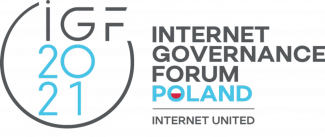Open source collaboration for digital sovereignty
8 Dec 2021 08:30h - 10:00h
Event report
Open source is an important, but often overlooked channel in enhancing digital sovereignty, Ms Paula Grzegorzewska (Senior Policy Advisor, OpenForum Europe). Open source software is the product of globally distributed developer communities, who collaborate online in its development and maintenance. Individual open source contributors benefit from their participation, learning skills that can help them land jobs and build companies. These skills provide both national and global benefits, creating a more highly skilled workforce and innovative economy.Mr Mike Linksvayer (Head of Developer Policy, GitHub) added that digital sovereignty and open source software are both about autonomy and capability and can be mutually reinforcing. However, the risk of pursuing digital sovereignty in strict terms is that of becoming a castle where ‘you don’t want to exchange technological ideas with the rest of the world, cutting off the connections with the scientific community’. On the contrary, with open source cooperation, technological exchange happens in a very accelerated fashion. However, in its turn, open source cooperation also runs the risk of under-investments.
Linksvayer explained the stages of open source adoption from the perspectives of the organisation and the nation. Open source solutions at first are ignored or feared (for security reasons), then a consumption/procurement phase occurs (to save money in contrast to proprietary software). Then organisations start to release and contribute to open source solutions, while governments experiment and start a policy of fostering the open source community through investments. Finally, organisations come to transformation through innovation, while states achieve digital sovereignty through strategic development of open source solutions.
Mr Jeremy Liang (Deputy Secretary, China Open Source Software Promotion Union) presented an overview of China’s development of open source, which started with the introduction of open UNIX system source code in the 1990s. The next ten years saw the flourishing of Linux user groups and solution centres, and the introduction of office tools. Considerable growth occurred in the period 2009-2018 when internet technology and internet companies embraced open source and built technologies on it. Currently China has over seven million registered developers in GitHub and the Chinese market is big enough for the adoption of open source solutions. Finally, China has invested heavily in operating systems, databases and artificial intelligence, chips, IoT, and cloud computing.
Liang pointed to the challenges of open source: projects and code have security risks and vulnerabilities; there are legal risks with OS licenses and IP rights, and supply chain risks. Despite these issues, open source can still improve trust between sovereign partners.
Mr Abishek Singh (Head of eGovernance Division, Government of India) pointed out many examples of how the Indian government uses open source products, including services and systems like Adhaar (digital identification) or digital education systems for schools. Singh also dispelled some doubts about open source: ‘Whenever we expose a code and we allow developers to push and pull commits we get a lot of ideas from innovators and that leads to ultimately building a productive solution which is better, more robust and more comprehensive than was originally thought’. Currently more than 85% of businesses in India use open source. Indians also have a large presence on GitHub: ‘They’re not only contributing to the public good, but also picking up things from there and insuring best practices are also incorporated our projects’. Singh also stated that open source solutions do not make your data and information available to anyone, nor is all of open source free of charge and poorly maintained.
Ms Nataliya Langburd Wright (PhD Researcher, Harvard Business School) shared the results of a recent study that shows a clear connection between development of open source (in amount of GitHub commits) with the emergence of technological ventures in a particular country. ‘This positive relationship might be because open source has the reverse relationship or it might be that open source is correlated with high human capital in different countries and a high human capital ends up leading to technological ventures’, said Wright. Policy makers may use open source as a tool to stimulate entrepreneurial ecosystems, while the private sector may see it as an early indicator of quality entrepreneurial activity and consider future investments.
Finally, Mr Laurence Moroney (Head of AI Developer Relations, Google) considered artificial intelligence (AI) as the biggest opportunity for global economy and local economies. However, it is still a very academic discipline and it is necessary for more people to contribute to its development; and the open source model fits best. Moroney shared Google’s strategy to reach more software developers by overcoming various barriers like education, certification programs, computational facilities, use of code, and building a programmer-friendly interface.
The workshop continued with a moderated discussion in which speakers addressed:
-
- The public discussion narratives of promoting open source as a tool for achieving digital sovereignty
- Prospects of more governmental involvement in open source communities and projects
- The problems of choosing in the wide variety of open source solutions for public procurement
- Brain drain and digital sovereignty
Session in numbers and graphs




Automated summary
Diplo’s AI Lab experiments with automated summaries generated from the IGF sessions. They will complement our traditional reporting. Please let us know if you would like to learn more about this experiment at ai@diplomacy.edu. The automated summary of this session can be found at this link.Related event

Internet Governance Forum (IGF) 2021
6 Dec 2021 10:00h - 10 Dec 2021 18:00h
Katowice, Poland and Online
